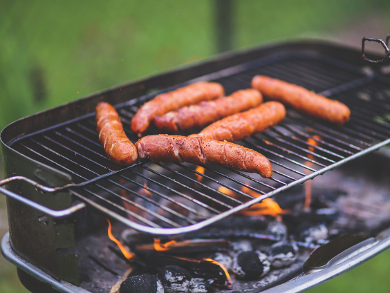To study the potential health hazards of barbecuing or charcoal-grilling, Eddy Y. Zeng, Chinese Academy of Sciences, Guangzhou, China, and colleagues have analyzed air samples near an outdoor barbecuing vendor stall. They collected size-fractioned atmospheric particles and gaseous samples with a 10-stage micro-orifice uniform deposit impactor and a polyurethane foam sampler. The samples were analyzed for particulate matter (PM2.5 and PM10, particles with diameters below 2.5 μm and 10 μm, respectively) and polycyclic aromatic hydrocarbons (PAHs).
Airborne particulate matter and PAHs are the major pollutants generated from cooking processes, with benzo[α]-pyrene (BaP) as the individual PAH of greatest health concern. The highest levels of PM10, PM2.5, BaP, and total PAHs were found two meters from the stove. Exposure to polycyclic aromatic hydrocarbons happens through inhalation, dermal contact, and consumption of charcoal-grilled food. The concentrations of PAHs in meats are highly dependent on cooking methods, content of fat, additives, and cooking fuels. Third-hand smoke, i.e., residues that stick to surfaces such as clothes, walls, carpets, and dust particles long after second-hand smoke has disappeared, may contain toxic pollutants and cause significant genetic damage in human cells comparable to cigarette smoke.
The researchers see outdoor exposure to barbecue fumes, particularly dermal contact, as a significant but largely neglected source of health hazards.
- Barbecue Fumes: An Overlooked Source of Health Hazards in Outdoor Settings?,
Chen-Chou Wu, Lian-Jun Bao, Ying Guo, Shao-Meng Li, Eddy Y. Zeng,
Environ. Sci. Technol. 2015.
DOI: 10.1021/acs.est.5b01494




